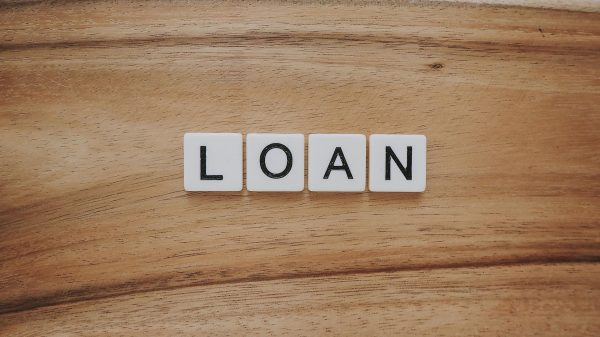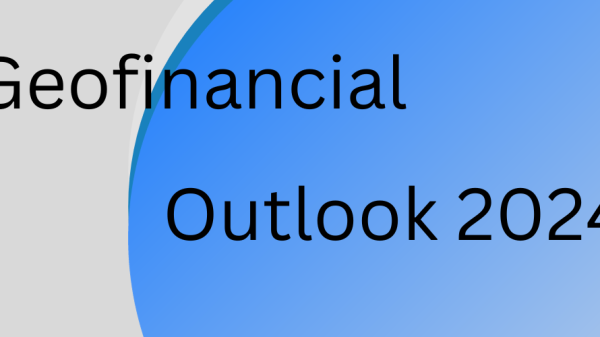Like it or not, most of us have or will take a loan sometime in the future. Although maybe you don’t want to have a loan, the fact is that sometimes, during a specific period of your life, or a period of financial distress, you will need a loan. That is unless you belong to the wealthy category of people. So, for you to be better safe than sorry, you should primarily inform yourself about the different types of loans that could be found out there. Try understanding the basic features of the different types of loans, which means that you should grasp the logic of the characteristics behind the general loan categorization and specific loans.
Again, before applying for a loan, you should sit down and consider the different possibilities you have at your disposal. Namely, you should make sure that you know the different types of loans. Understanding the loans will help you make a better and informed decision regarding a loan suitable for your needs, which is a second key issue to remember. Meaning that you should know what the reason you are taking a loan is. Thus, it would be much easier for you to select the best loan when shopping around.
The need for gathering information is to ensure that you will have the best loan with the best terms in accordance with your lifestyle and financial situation. Always remember that some loans are more expensive than others.
Before explaining the types of loans, you should be able to define what a loan is. A loan is a process in which one entity is giving money or other forms of an asset to another entity. The money or assets are given with the expectations for future repayment of the principal amount, plus any interest or other form of changes. Thus, do not expect that you will get free money. You must pay back your loan plus the interest you are charged with.
Types of loans according to their basic features
If you are not aware that there are numerous types of loans, then you might get confused. Consequently, it could be said that loans can be categorized in accordance with a couple of factors, basically representing crucial characteristics of the loan. Thus, the different types of loans could be categorized in terms of the following factors:
- The need for collateral
- Unsecured loans
- Secured loans
- Repayment terms and terms for reusing of funds
- Open-end credit
- Closed-end credit
- Time to maturity
- Short-term debt
- Intermediate-term debt
- Long-term debt
- Loan purpose
- Loan approved for a specific purpose
- Buying a home (mortgage loan)
- Buying a car – car loan
- Buying in-store – Consumer loan
- Loans for general use (no specific purpose)
- Personal loan
- Credit card
- Loans according to their interest rate
- Variable-rate loans
- Fixed-rate loans
- Loan approved for a specific purpose
Whether a loan needs a collateral or not, we can distinguish two basic types of loans, secured and unsecured loans.
Secured loans (collateral loans) – loans that are tied up against some form of asset. This way, the lender ensures that the loan would be paid back if you fail to meet your monthly obligations. The underlying asset is referred to as collateral or guarantee. This implies that, in case of a loan default, the lender has the right to repossess the asset and cover the loan. Because the lender is protected against non-repayment of loans, interest rates on secured loans tend to be lower compared to interest rates on unsecured loans.
Unsecured loans – unlike secured loans, with unsecured loans, you do not need to provide an asset as collateral. These loans are approved based on your credit score and credit history, as well as the level of your income. Because these loans are not guaranteed with any assets, they usually have higher interest rates. They are perceived by the lenders as riskier types of loans.
Taking into consideration the loan repayment terms, a difference among various types of loans can be found. This is taking into consideration the possibility of reusing the repaid amount. Meaning that some types of loans have revolving characteristics, while other loans do not offer this possibility. In line with the aforementioned, the loans can be placed in two categories, open-end credit, and closed-end credit.
- Open-end credit – this type of consumer credit is also referred to as revolving credit because of the way it can be used. The revolving credit can be used continuously for purchases. The outstanding amount is repaid every month, either in full or a portion of the outstanding debt. An example of a well-known product that falls in the category of open-end credit is credit cards. In addition, home equity lines of credit (HELOC) belong to this category. These loans have a so-called credit limit, representing the maximum amount you could borrow at once. You are not obliged to use the entire limit at once, you can use the available funds as you need.
- Closed-end credit – is most often used as a means of financing a specific intent during a specific period. The closed-end credit is also referred to as an installment loan because of its repayment obligation. Namely, consumers have a pre-defined payment schedule and are obliged to make a regular payment. The most common payment schedule is the monthly schedule. Consumers are charged an interest rate until the full repayment of the principal amount. The interest rate charged can be different among lenders and borrowers because of the importance of borrower’s credit scores. Some examples of closed-end credit are mortgages, car loans, appliance loans, etc.
Loans can be classified from the “time” point of view. In other words, not all loans have the same maturity date, which means that they differ in terms of their repayment period. Hence, in accordance with the repayment period, there are three basic categories: mid-term loan, intermediate-term loan, and long-term loan. A short-term loan is a loan that should be repaid in one year or less. The intermediate-term loan is commonly characterized by a repayment period of anywhere from one year to five years. Long-term loans are considered loans with a maturity period of more than five years, but most often, they have a repayment period of ten years and more.
Another categorization of the loans can be performed with reference to the purpose of the loan. Namely, if you want to renovate your house or purchase some appliance, you could find a loan designed specifically for these purposes. On the other hand, you could apply for a loan without having any specific purpose in mind (yes, this is hardly the case since you always know why you take the loan). For instance, you could take a loan (no specific purpose loan) to pay for some unexpected expenses.
Furthermore, loans can be classified based on the type of interest rate they have. Namely, a loan could be assigned with a variable interest rate or a fixed interest rate.
- A variable interest rate loan is considered a loan where the interest rate applicable to the outstanding balance can change according to the variations in market interest rates, which means that the interest rate is adjusting to the market interest rate. Thus you could end up paying a much higher or much lower interest rate on your loan, regardless of the interest rate at the time of signing the agreement.
- On the contrary, a fixed interest rate loan is characterized as a loan in which the interest rate remains the same throughout the life of the loan, which means that you are paying a fixed interest rate on your loan regardless of the movements in the market interest rates. In other words, you will pay the interest rate that has been agreed upon at the time of signing the loan agreement.
The aforementioned types of loans are based on the classification taking into consideration the general features of the. Aside from this classification, there is one more classification, i.e., the types of loans offered by the banks and other financial institutions. For that reason, there is a need for some of these loans to be listed and briefly explained. Accordingly, the different types of loans are briefly explained in the subsequent lines.
- Student loans – are loans available to college students and their families. The purpose of student loans is to serve as help for the payment of higher education costs, i.e., tuition fees. The basic form of student loans is federal student loans and private student loans. Most often, federal student loans are preferred because of the lower interest and better repayment terms.
- Mortgages – are a form of loan used for buying a home. Because of consumers’ inability to pay the price of the home in full at the time of buying the home, they are in need of additional funds. These funds are obtained through a mortgage loan. You should know that a mortgage loan is associated with your home, thus failing to meet your monthly payments could result in foreclosure of your assets (collateral). In addition, mortgages loans are considered to be loans with the lowest interest rates.
- Auto loans – have similar characteristics to mortgage loans in terms of the need for collateral. In other words, auto loans are tied to your property (most often the vehicle you will purchase). Failure to meet your payments could result in losing your vehicle.
- Personal loans – are loans used for various (as the name suggests) personal expenses and/or needs. This type of loan is not approved for some specific reason, as with mortgage or auto loans. Personal loans can be used to repay your outstanding debt (most often credit card debt), aiming to reduce the interest rates through balance transfers. The terms for approval of these loans are tightly related to borrowers’ credit scores. Personal loans represent an unsecured loan.
- Payday loans – are short-term loans characterized with high-interest rates. These loans are usually used to overcome short-term cash flow problems.
- Consolidation loans – are loans commonly used to better manage your finances. You are taking this type of loan to consolidate all (or most) of your debts into one single loan and one single monthly payment. You could also get a better deal in terms of a lower interest rate.
- Home equity loans – if you have some portion of the equity in your home, it means that your home is worth more than you owe on it. This difference, called equity, can be used for paying more costly projects. For this reason, they are used for renovating your home, consolidating debt, etc.
- Home equity lines of credit (HELOC) – are somewhat similar to home equity loans since they both use the equity in your home as a means of a loan guarantee, thus having lower interest rates. The difference between the aforementioned type of loan and HELOC is in the repayment terms and the type of interest rate. That is, a home equity loan is characterized by a fixed interest rate and regular payments. On the other hand, HELOC consists of a variable interest rate and flexible payment schedule.
After you got acquainted with the different types of loans, you should be able to identify the most appropriate loan that will serve your needs best. Understanding different features of different types of loans would make shopping for loans much easier. In addition, you should always know your rights as a consumer. You can apply for a loan to buy a car, purchase a home, paying your tuition fees, renovating your home, etc. There is a wide range of loans available to cover different needs. Thus, to ensure safe lending practices and eliminate the possibility for manipulation of borrowers, federal guidelines have been set in place. In that manner, you should know that irrespective of the type of loan and its repayment terms, every loan is overseen by state and federal guidelines to protect consumers. If you think that you have been manipulated or misinformed, please check your rights at the Federal Trade Commission.
Understanding the different types of loans will enable you to identify the most appropriate loan that will serve your needs best.







